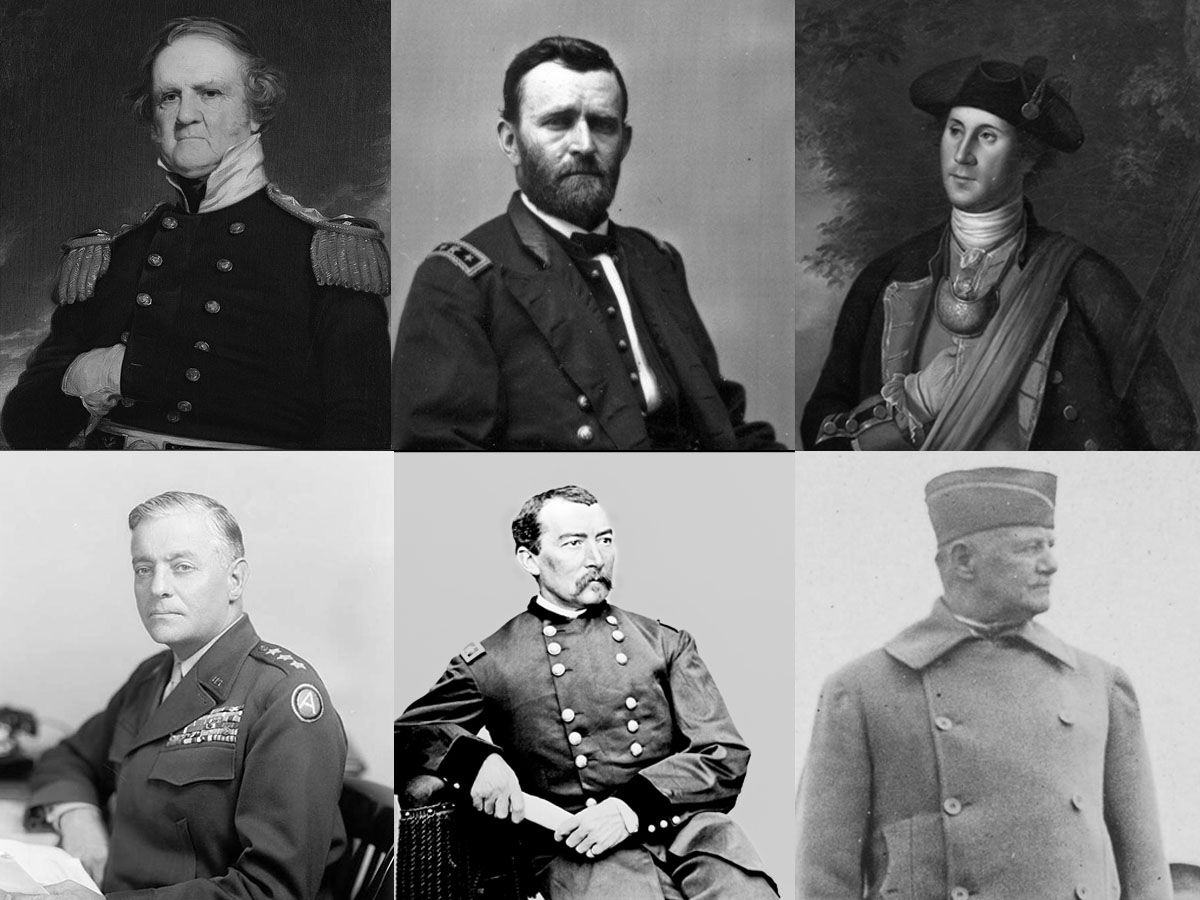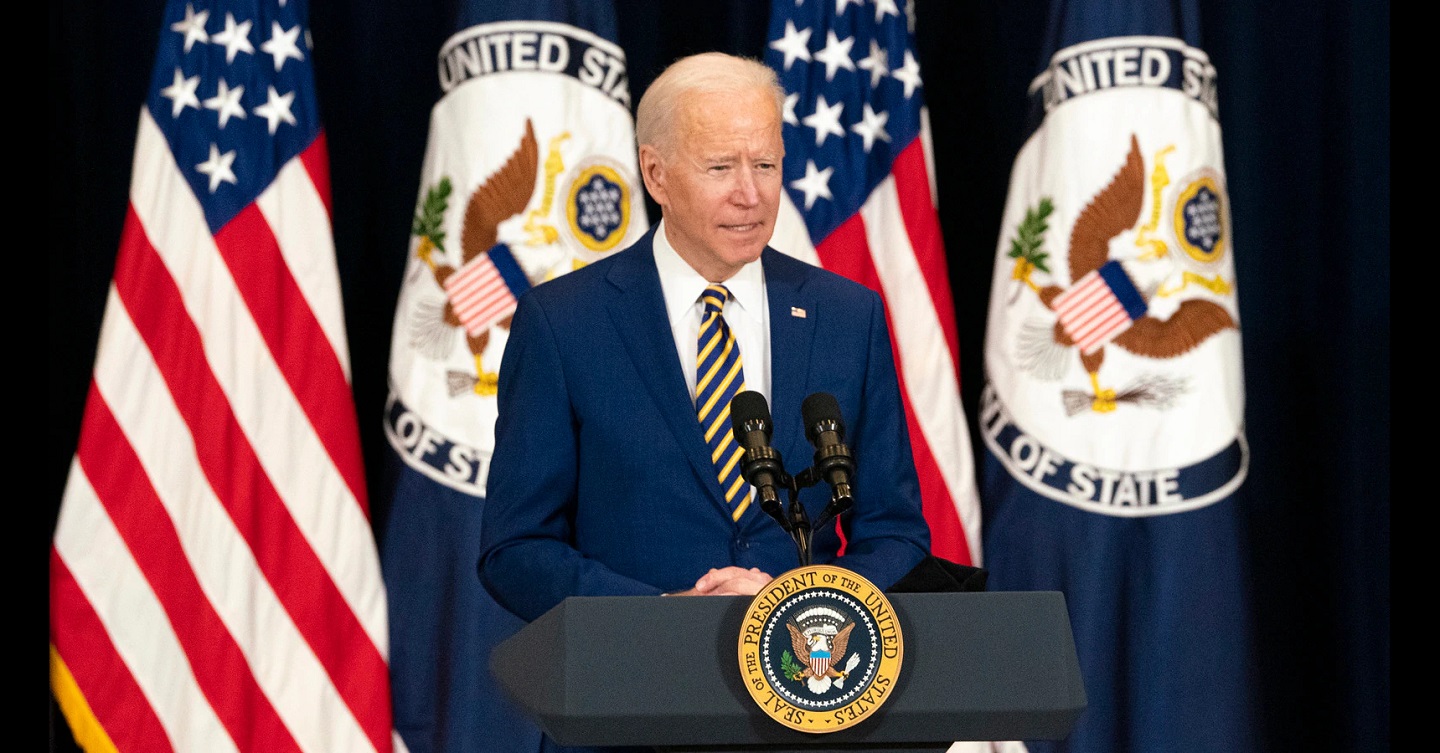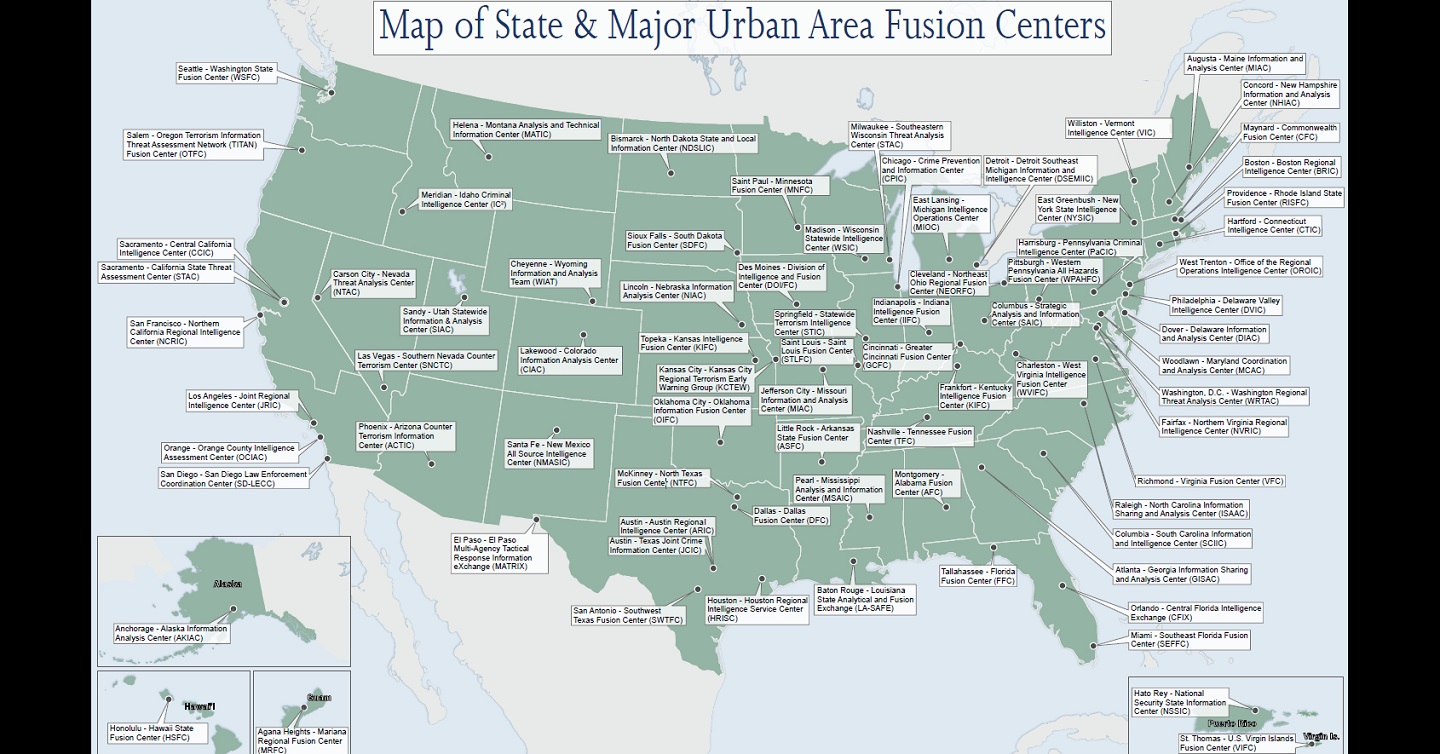
Destroying enemy armies provides the best litmus test for ranking great army commanders
Who’s the ‘best’ football player of all time? Or entertainer? Or U.S. President? Many people would answer with strong opinions which are difficult to argue against. It’s a subjective call – ‘best’ might be interpreted as ‘favorite,’ rather than the highest rated according to some measurable standard.
Now, asking who is ‘second best’ is more challenging. Not only must one identify some sort of ‘top two,’ they must compare them in some way to justify the ranking. There’s room for logic and reason, and people can discuss the validity of the standard and whether the ‘top two’ were properly chosen.
In this spirit, we have asked several scholars to apply this exercise to Army commanders. The question was:
State, with no explanation, who you think is the greatest American field army (or army group) commander, then make the case for who is the second greatest American field army (or army group) commander.
Review the answers they gave below and offer your own. Who are your top two, and make the case for the second-best. Your answer should not only include the strengths and accomplishments of your chosen leader, but also a sense of why he or she falls a step (or leap) short of #1.
The usual Whiteboard rules apply. 300 words maximum in line with our submission guide. Send either as an e-mail or a Word attachment to us with the Subject line: Whiteboard #7 by January 9, 2019. Please send TO: thomas.p.galvin.civ@mail.mil and CC: andrew.a.hill13.civ@mail.mil
The WAR ROOM editors thank Dr. Thomas Bruscino, U.S. Army War College for assembling this Whiteboard prompt!
1. LTC Thomas W. Spahr, Ph.D., Student, US Army War College
(1st) Matthew Ridgway, (2nd) Winfield Scott
General Matthew Ridgway was the greatest American field army commander in history. During the Korean War (1950-53), he took command in a seemingly impossible situation, turned a broken military into a winning team, and leveraged keen understanding of his adversary and his own political leaders to secure the U.S. strategic objectives. Just over a century earlier, the second greatest American commander—General Winfield Scott—accomplished a similar feat during the Mexican War and nearly doubled the size of his country. Leading an army of approximately 10,000 soldiers into central Mexico, Scott defeated numerically superior Mexican armies in three major battles. He brought discipline and carefully husbanded his small force of regulars and volunteers as he repeatedly outmaneuvered the Mexicans.
From his study of the French disaster during the Peninsular War, Scott knew to respect the Mexican population or risk a costly guerrilla war. When American soldiers acted harshly towards civilians, he had them flogged or, occasionally, executed. Despite anti-Catholicism in the United States, he processed into Catholic services with Mexican priests, who held influence over the common people. After taking Mexico City, Scott exploited social fissures between the light-skinned ruling Creoles and the dark-skinned indigenous masses to pressure the Mexican elite to accept peace before a civil war erupted. Scott exploited this Mexican urgency to end the war, along with the possibility the impulsive President James K. Polk would recall Scott to Washington, to pressure his adversaries to quickly agree to the American terms. Scott made a brilliant final stroke by quietly promising military assistance to the Mexican elite so they could consolidate power after the war, if they immediately accepted the American terms.
Undeterred by great odds, attuned to their adversaries’ weaknesses and their political masters’ impulses, Ridgway and Scott won military and political success, earning the title of the two greatest American field army commanders.
2. Mike Morris, Colonel, USMC (Ret), PhD Candidate, Texas A&M University
(1st) Roy Geiger, USMC; (2nd) Ulysses S. Grant
Destroying enemy armies provides the best litmus test for ranking great army commanders. Few American generals have managed that feat. Many have had the opportunity but ultimately failed to trap and eliminate enemy armies: George Patton at the Messina Straits in 1943; Mark Clark’s attempt to flank the Gustav Line with a landing at Anzio also in 1943; Dwight Eisenhower, Omar Bradley, George Patton (once more), and Courtney Hodges at the Falaise Gap and the Seine River line in 1944;, Alexander Patch’s pursuit in the Rhone River Valley after the invasion of southern France in 1944; Walton Walker’s pursuit following the Pusan breakout in 1950; or Norman Schwarzkopf during Operation Desert Storm. The list is still further reduced by removing from consideration those whose foes were physically unable to escape, such as Simon Bolivar Buckner on Okinawa. Finally, some managed the capture of an enemy army only with major assistance from allies: George Washington at Yorktown and Dwight Eisenhower and George Patton in Tunisia. These subtractions leaves a small group of candidates. Only one American general has done it twice.
In 1863, Ulysses Grant trapped John Pemberton’s army in Vicksburg with masterful maneuver and then captured the Confederate army with a successful siege. Later, Grant maneuvered Robert E. Lee’s army into Richmond’s defenses, and then ran the rebel army down at Appomattox when it tried to escape. Most remember Grant’s 1864 Overland Campaign against Lee for its bloody assaults, but his flanking “side slips,” shifting of logistics bases, and crossing of the James River shows a mastery of maneuver to match his sheer doggedness of purpose. And for those who think Grant was nothing more than a butcher blessed with superior resources and a stubborn streak, in January 1864 he recommended a a littoral campaign into North Carolina to cut the Confederate railroads to force Lee’s army to clear its vital lines of communication far from its Richmond base. Grant also wrote the best memoir of any American army commander. If he’d only been a jarhead, he could have won this contest….
3. Wayne Wei-siang Hsieh, Professor, United States Naval Academy
(1st) Ulysses S. Grant; (2nd) Philip Sheridan
The traditional ranking of Union generals places Ulysses Grant at the top, with William Sherman as the second. Both leaders’ merits are numerous, and I will not belabor them here. But I want to make the case that Philip Sheridan deserves more recognition than he has received in the past. It is not only that Sheridan was a gifted battlefield commander, described by one officer as “the only commander I have ever met whose personal appearance in the field was an immediate and positive stimulus to battle—a stimulus strong enough to turn beaten and disorganized masses into a victorious army.” More importantly, however, Sheridan created for the first time during the war a cavalry arm capable of achieving decisive effect on the battlefield by using Spencer repeating rifles while fighting as infantry, traditional shock tactics while mounted, and all in coordination with supporting infantry and artillery units. In short, it was Sheridan, and Sheridan alone, who achieved a true combined arms approach to Civil War military operations.
Even before Sheridan took command of the Army of the Potomac’s cavalry, some Union regiments had acquired and used Spencers, but the need for cavalry units to detail one of every four soldiers as a “horse-holder” took substantial amounts of firepower out of a dismounted firing line. The Spencers helped offset this inherent disadvantage of cavalry. Moreover, as Sheridan would show, when used properly and in conjunction with the other arms, mounted cavalry charges could still be made to great effect. Despite his early struggles as the head of the Army of Potomac’s cavalry in the Overland campaign, Sheridan eventually learned to coordinate this new iteration of the dragoon with infantry and cavalry to achieve decisive operational effects in the Shenandoah Valley, at the Battle of Five Forks and during the Appomattox campaign.
It was Sheridan, and Sheridan alone, who achieved a true combined arms approach to Civil War military operations
4. Thomas Bruscino, Professor, U.S. Army War College
(1st) Ulysses S. Grant; (2nd) Hunter Liggett
America’s second greatest field army commander (Grant is first) almost never got the chance. Hunter Liggett was too old and overweight to command in John Pershing’s exhausting, relentless American Expeditionary Forces (AEF). But Liggett, a leading soldier-scholar in the army, impressed Pershing enough to get command. After that, the idea of dumping Hunter Liggett never came up again.
Good thing, too. The Meuse-Argonne campaign of 1918 was more than “America’s deadliest battle.” The offensive aimed at the railroad hub at Sedan began on September 26 with Pershing serving as both the AEF and U.S. First Army commander and Liggett commanding I Corps. After a fast start, a combination of American inexperience, weather, terrain, German reinforcements, bad roads, and the nastiest influenza in history held up tactical units. Pershing kept them battling, but even his will had limits, and he stretched himself thin commanding the AEF and First Army simultaneously.
He turned over First Army to Liggett on October 16. Liggett reconstituted the army for a breakout, even as it kept fighting. By Liggett’s design, in the last weeks of October, First Army broke into the Hindenburg Line—a shaping operation that allowed the American forces to fight out of trenches, not through them.
The November 1 assault that followed was a masterpiece of operational warfare, as Liggett employed his subordinate corps in a series of simultaneous and sequential actions. A feint on the left drew in the enemy and allowed for a breakout in the middle. In hours, the Americans seized the decisive fortified high ground, and transitioned to a pursuit that cut the railroad at Sedan in days.
Liggett directed a sequel campaign toward Germany, begun by his right corps that turned east and executed an opposed river crossing over the Meuse. The Germans agreed to the armistice before he could finish, but that should only enhance his reputation. He did more in less than four weeks than most do in lifetimes. When it comes to field army commanders, Hunter Liggett was as good as it gets.
5. Barry M. Stentiford, Director of the Advanced Strategic Leadership Studies Program, U.S. Army School of Advanced Military Studies
(1st) Ulysses S. Grant; (2nd) George Washington
General George Washington was a great field army commander because he had the flexibility to adapt his methods, but never lost sight of his ultimate goals.
Washington fully accepted and supported the war aims put forth by the Second Continental Congress. More fundamentally, he fully accepted and championed the principle of subordination of the military to civil authority. He had the character to avoid and prevent the use of military force to influence civilian government. He would be no Oliver Cromwell.
Washington understood that his tactical actions had to be linked to larger strategic and political goals. If the goal was independence, that meant recognition of the United States as a sovereign state (or states) by European states. To that end, he consistently sought to make his conventional force—the Continental Army—look and fight like a European army. That did not always make the most tactical sense, but it gave the revolutionaries a legitimacy that a fully irregular effort would not have garnered. That said, he was at the same time able to employ militia forces, or coordinate actions with them, to combine regular and irregular warfare. British commanders were never able to employ Loyalist militia as effectively.
Washington believed a large set-piece battle would decide the war. He initially believed this battle would take place in Boston. After the evacuation of Royal forces from that city, he focused on New York City as the likely location. The battle there was a decisive victory that nearly won the war…for the British. But Washington’s desire to redeem this loss by recapturing New York City did not blind him to other opportunities when they arose. Thus when he saw an opportunity to capture a large Royalist force under Lord Cornwallis on the Yorktown Peninsular, he had the mental agility to take the necessary risk.
6. Jon Mikolashek, Professor, U.S Army Command and General Staff College, Ft. Belvoir, VA
(1st) George S. Patton, Jr.; (2nd) Lucian K. Truscott, Jr.
Lucian Truscott never became President, nor was an Academy Award winning movie made about his exploits in World War II, but he was one of the most accomplished officers to serve and fight in World War II.
Truscott is one of the few figures in World War II to command a regiment, a division, a corps, and an army in combat. He was also influential in the creation of the 1st Ranger Battalion. Truscott, unlike most of his fellow army commanders, served in several different theaters in various roles throughout the war. Due to his talents and this wide breadth of experience, Truscott served capably at every level, usually playing an important roles in key operations. He participated in the Operation TORCH landing in North Africa, under George S. Patton, Jr., and later led the 3d Infantry Division during the invasion of Sicily. Truscott then helped avert disaster at the Anzio beachhead, by taking command of the weary IV Corps and quickly turned that wayward unit around.
After proving his worth to both his American and British superiors, Truscott replaced General Mark W. Clark as commander of the United States Fifth Army in Italy. In Italy, Truscott would lead his command through some of the toughest fighting in the war during the hard winter campaign of 1944-1945. In the spring of 1945, Truscott distinguished himself from his peers as he led the Allied force up the Italian peninsula and crushed the Germans by spring. At all levels, Truscott was successful and the second greatest field army commander in United States history.
The views expressed in this Whiteboard are those of the contributors and do not necessarily reflect those of the U.S. Army War College, U.S. Army, or Department of Defense.
Images: Collage of the six ‘second best’ field Army commanders listed in the Whiteboard prompt. Top row (L to R) = Winfield Scott, Ulysses S. Grant, and George Washington; Bottom row (L to R) = Lucian K. Truscott, Jr., Philip Sheridan, and Hunter Liggett
Image Credit: Assembled by Tom Galvin





Best American Army Group Commander= William Tecumseh Sherman, commanding three armies in spring and summer of 1864 during the Georgia campaign and then another (smaller) three armies for his advance to the sea and then north through the Carolinas.
Second Best–Jacob Devers, easily, in World War II, 6th Army Group, European Theater of Operation. Worked well with others, and with Allies. Achieved goals with little fanfare or self-promotion, despite his being disliked by everyone else from Eisenhower on down, but pretty much loved by all his subordinates or anyone who worked for him. High in G.C. Marshall’s estimation too. See the new biography on Devers by James Scott Wheeler for all the evidence you need.
John T. Kuehn, Ph.D.
Professor of Military History
Fort Leavenworth, Kansas
Good ones. Always hard to go against Sherman. Write up a bit more and send it in for the follow up Whiteboard.
George Thomas !!!!